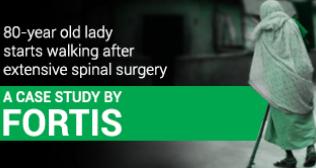Endoscopic Skull Base Surgery: Procedure, Recovery And What To Expect
The brain is perhaps the most complex organ of the human body, and it plays a pivotal role in ensuring every thought process – in detail, memory, and all the sensory functions, including hearing, breathing, vision, temperature, and hunger. A healthy brain is a happy you; this organ is a powerhouse of soft tissues, nerve cells, and many other parts – all protected by the skull.
A skull at its base consists of 5 bones, from front to back which are frontal, ethmoid, sphenoid, temporal, and occipital and form the parts of eye sockets, the roof of the nasal cavity, sinuses, and inner ear. Four components of brain tissue are the frontal lobe, temporal lobe, brain stem, and cerebellum. The base of the skull is quite complicated, with openings allowing various other parts of the Central Nervous system like the spinal cord, blood vessels, and nerves to pass through.
Skull base surgery is a highly complicated procedure, often recommended for patients suffering from benign or malignant cancerous tumours and correcting abnormalities in the brain and skull base. It is also done to fix the problems associated with the top vertebrae of the spinal column.
The advent of endoscopic procedures brought a new lease of life for patients suffering from various brain-related complications. Performed by extensively trained surgeons, these endoscopic often require a team of specialists, including neurosurgeons, ENT surgeons, maxillofacial surgeons, and radiologists.
Health Conditions That Would Require Skull Base Surgery:
- Congenital cysts and infections
- Tumours of the pituitary gland
- Meningiomas and noncancerous tumours that grow from the meninges. Craniopharyngiomas, the growth near the pituitary gland
- Chordomas, a slow-growing bone tumour that forms at the base of the skull
- Trigeminal neuralgia
- Cerebrospinal fluid fistulas
- Aneurysm of the brain occasionally
How Is Endoscopic or Minimally-Invasive Skull Base Surgery Performed?
One of the advantages of endoscopic skull base surgery is a minimal incision or accessing the affected area through natural openings like the nose or mouth. In a few instances, the surgeon may have to make a small opening just above the eyebrow for better reach. The surgeon removes the growth through these openings and repairs the area through a thin rigid endoscope attached to a high definition camera systems. An MRI done simultaneously provides pictures of the skull base and helps the surgeon understand if all the cancerous growth has been removed (intra-operative MRI).
The surgery can take anywhere from 2 to 6 hours or longer, depending on the case's complexity.
The patients would require post-operative nasal packings, which will be removed after a week. The patient would need to stay 2 to 3 days in the hospital after surgery.
Would The Patient Require Follow-Up Visits After Surgery?
The patient may have to visit a doctor to remove the plastic splints in the nasal passage. They are removed within a few days after surgery. The patient’s nasal cavity will also be endoscopically tested to monitor the healing. It may take up to 3 months to complete the healing process.
Patients may notice a loss of smell and taste for a few weeks after surgery. These, however, will return after the nasal cavity gets healed completely.
The patients could be independent within a couple of days post-surgery. However, ample rest is highly recommended for faster healing of the wounds. The patient can get back to work within a few days but should restrain from heavy lifting till complete recovery.
Traditional Skull Base Surgery Vs. Endoscopic Skull Base Surgery:
The conventional skull base surgery would require multiple incisions on the skull. The surgeon may have to remove some parts of the bones to restrict the growth of cancer cells.
In endoscopic skull base surgery, there are no incisions, and the patient would recover faster, with minimal blood loss.
For more information on Skull Base Endoscopic Surgery, please contact: 7829997788
Visit our website: fortisbangalore.com








}}drupal-data/images/blog-lists.png)









